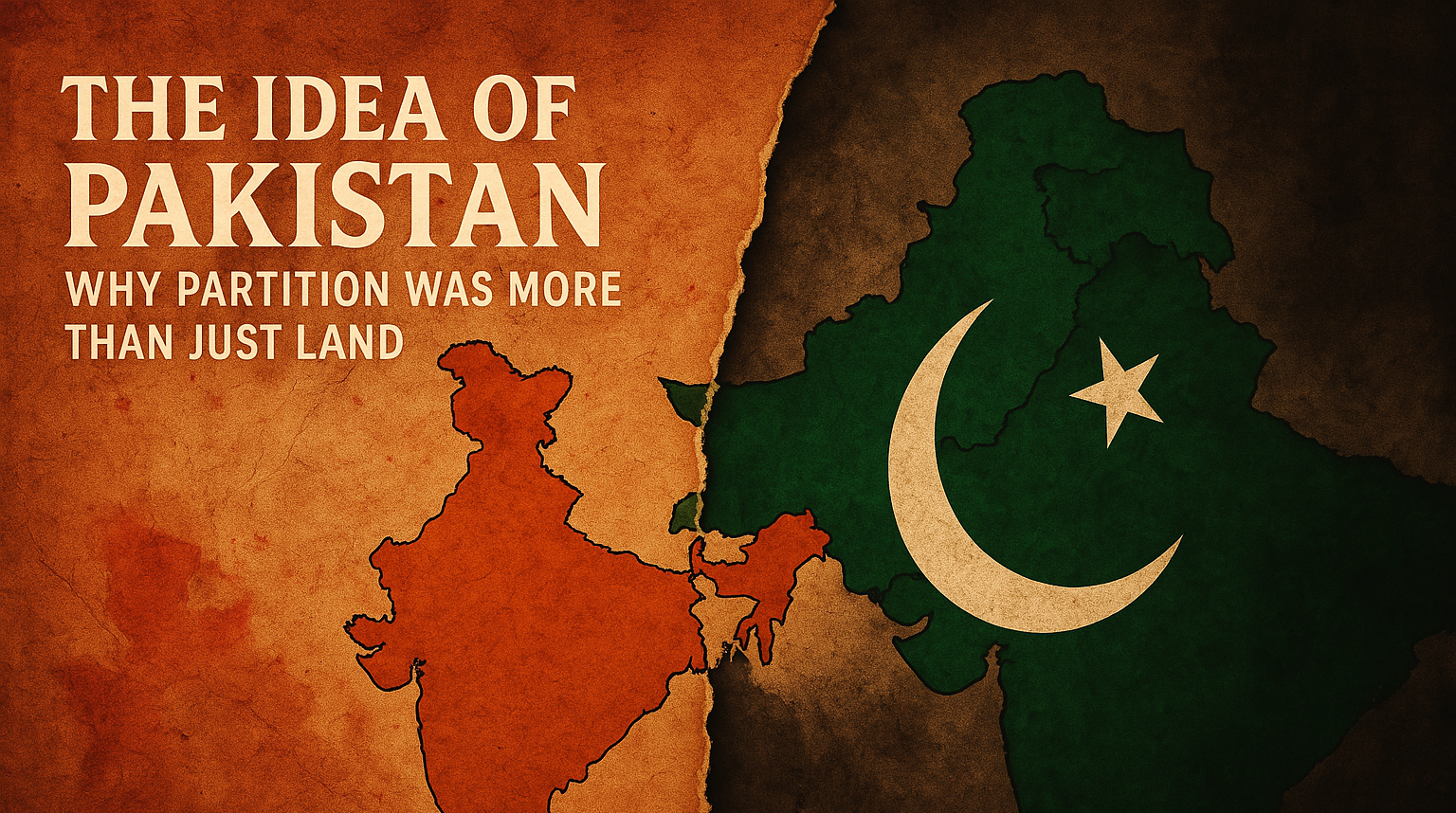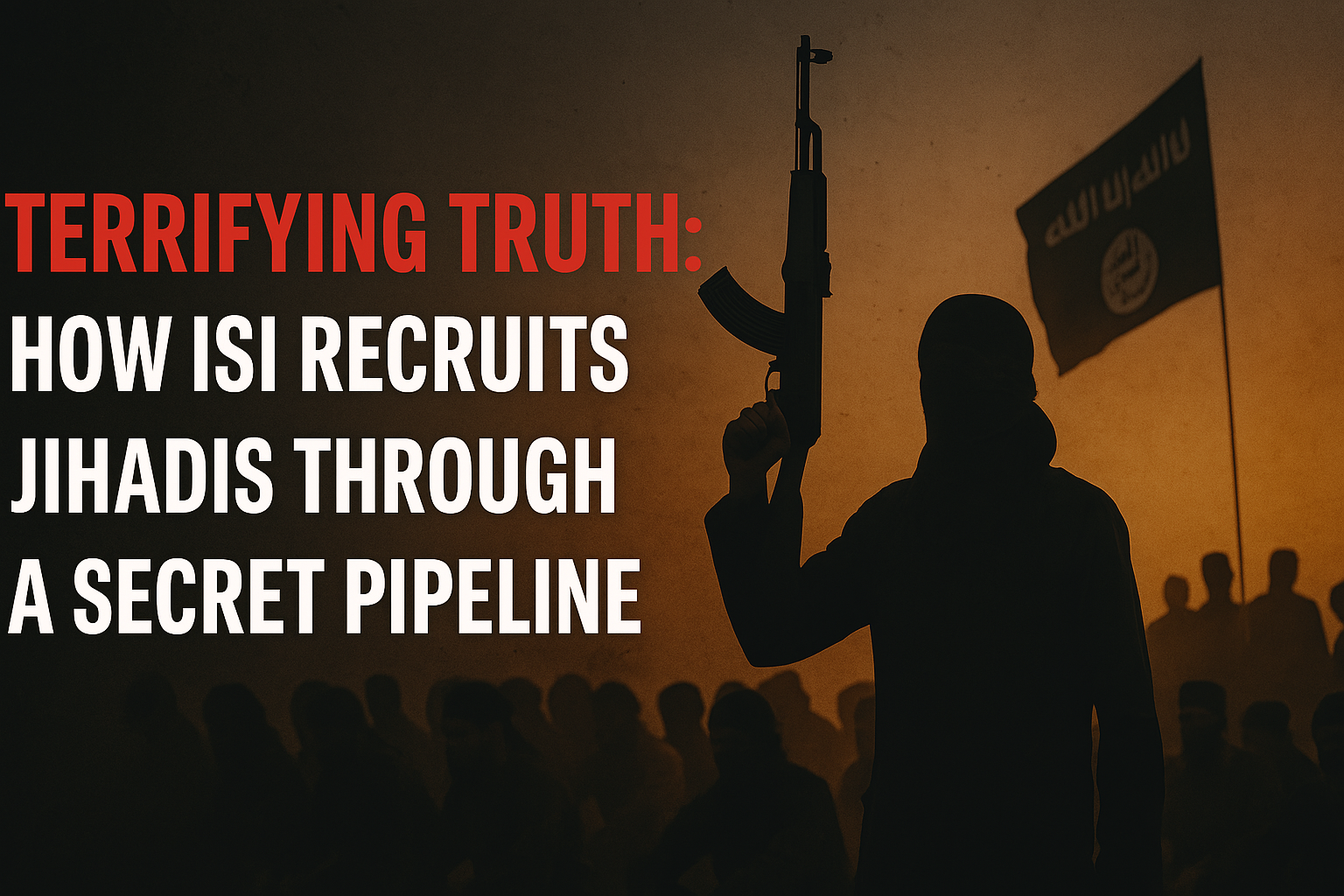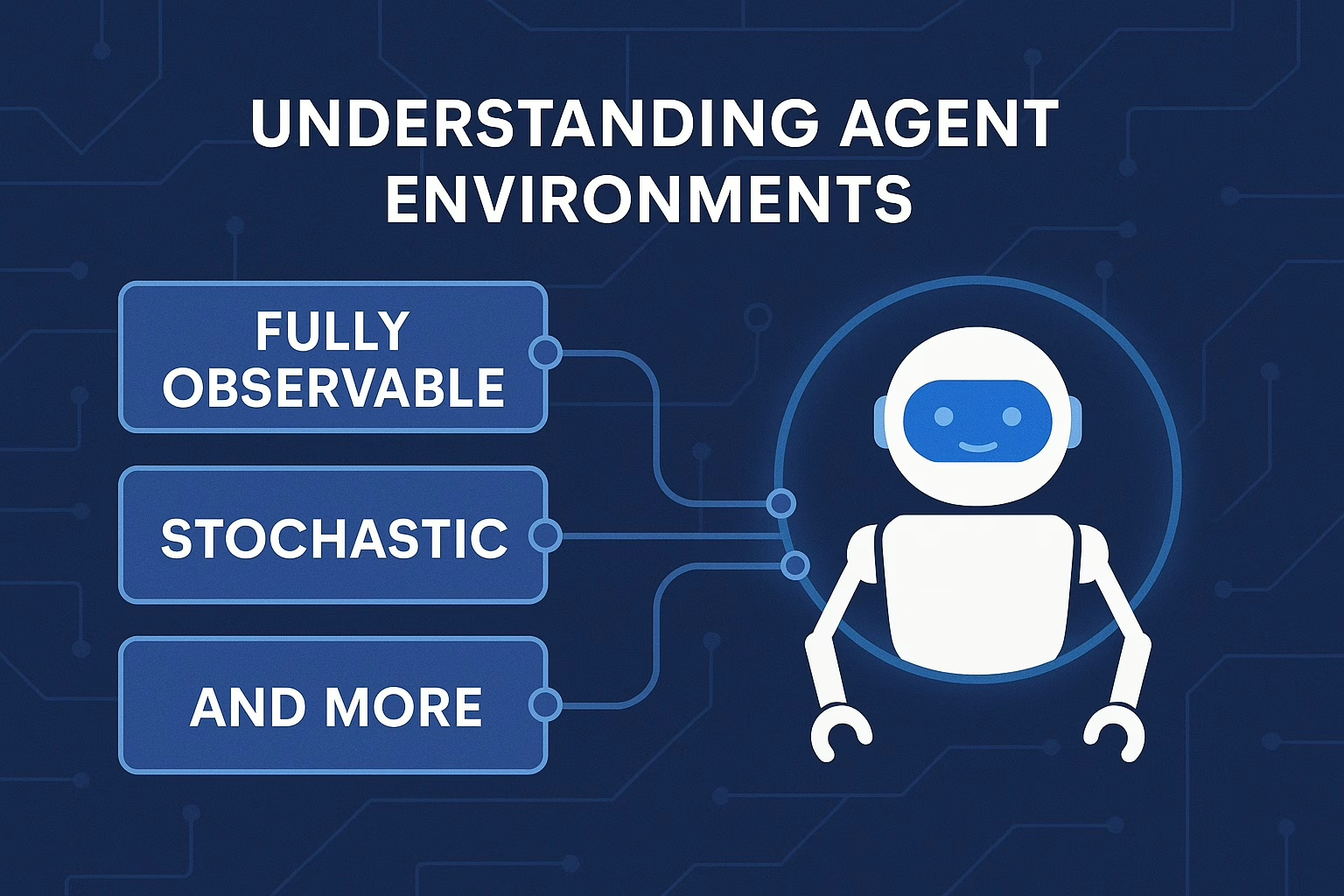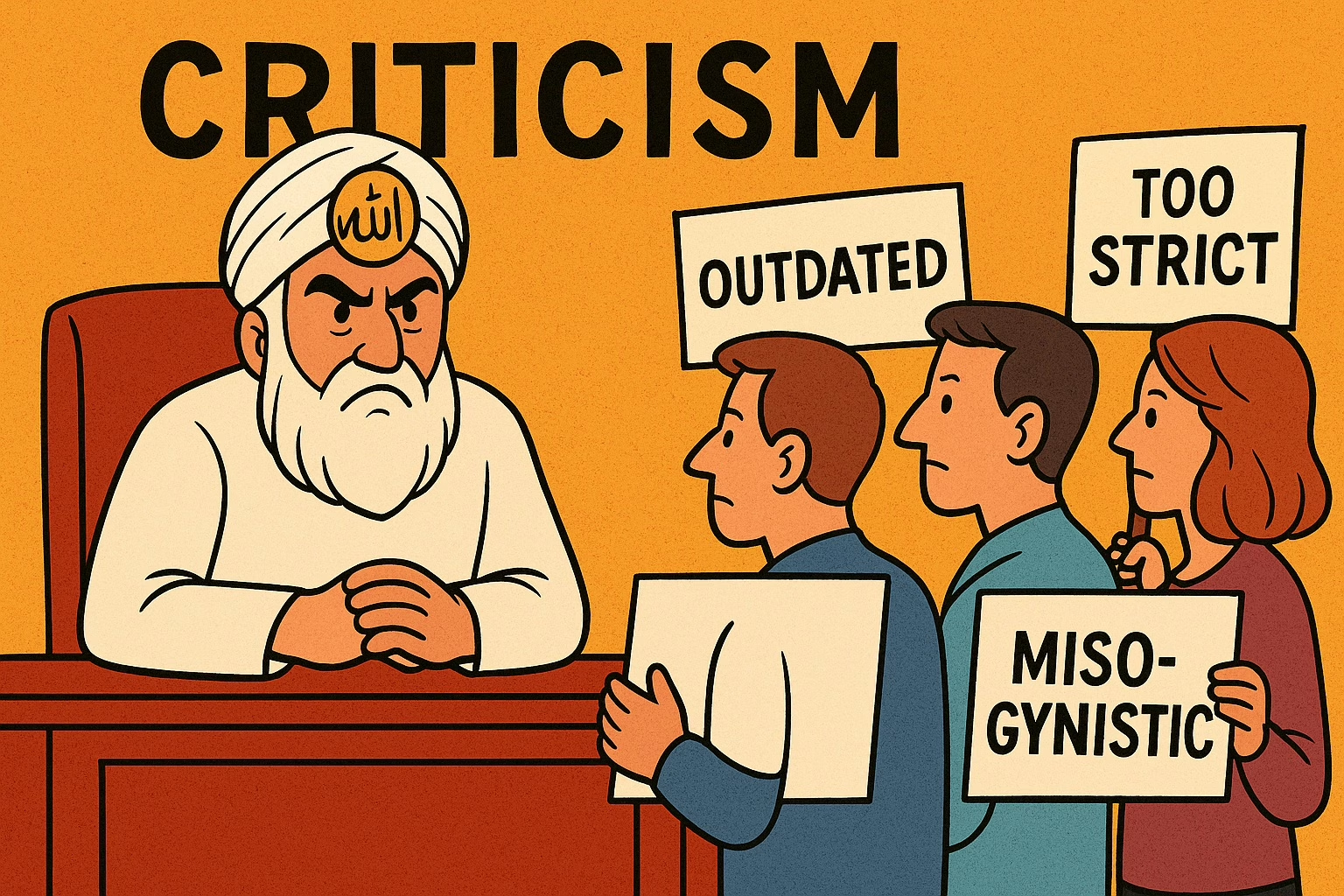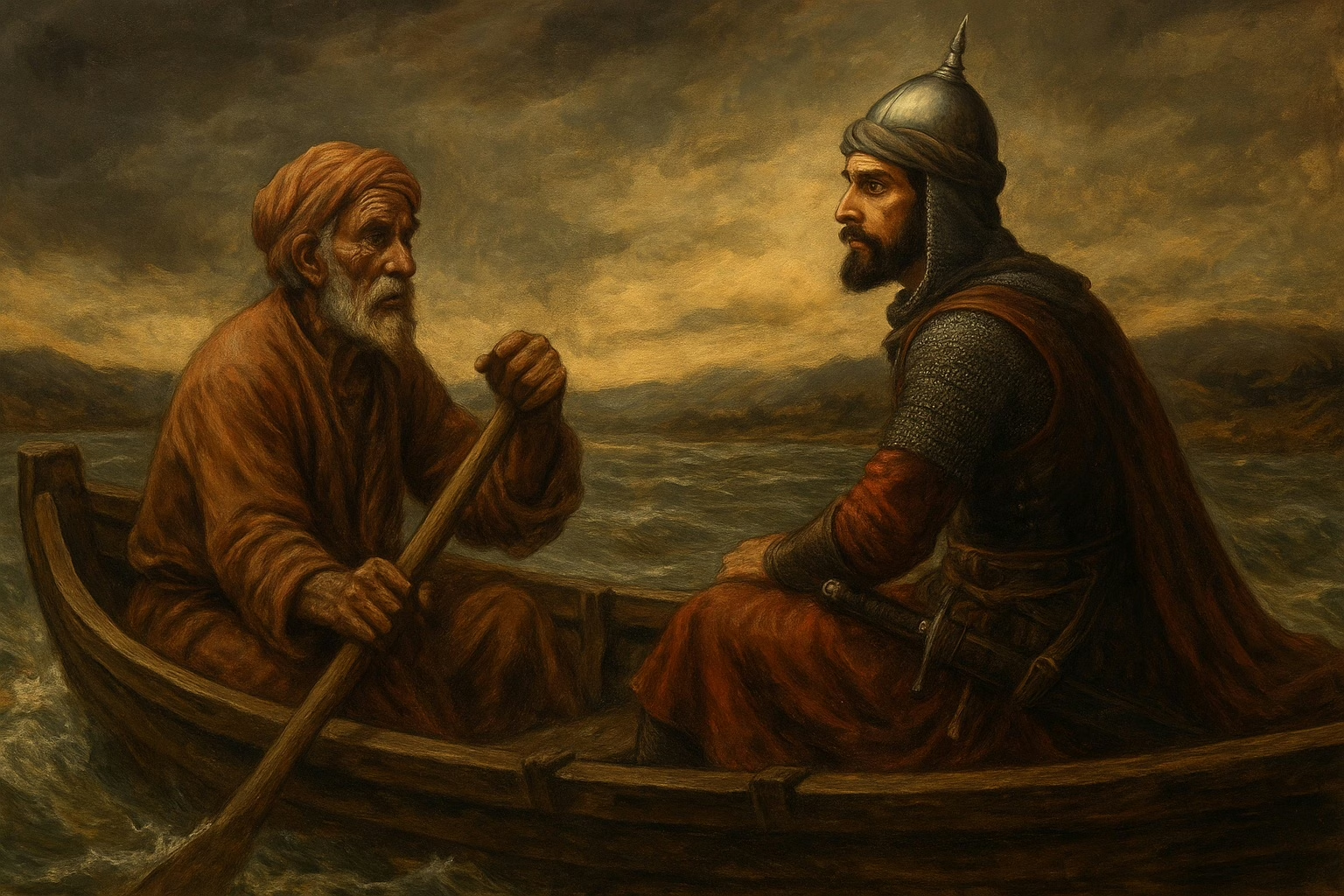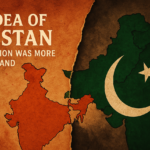Borders on a Map vs. Borders in the Mind
In 1947, the British packed their bags, drew a line across a subcontinent, and birthed the idea of Pakistan — a rupture that wasn’t just about land. However, it wasn’t about drawing a border—it was about drawing a bloodline, a belief system, a parallel universe where the very existence of India is considered a cosmic error.
The Partition was not merely a geopolitical event. It marked the birth of an idea—one so potent, so toxic, that it still metastasizes far beyond the Durand and Radcliffe lines.
This belief, canonized as the Two-Nation Theory, did not simply aim to create a new homeland for Muslims. Rather, it sought to permanently rupture the civilizational unity of the Indian subcontinent and lay the foundations of an ideological war that still rages today — within India, across South Asia, and in global forums.
“The truth is that nations are built not on soil, but on stories. And the idea of Pakistan is a story that started with a lie, flourished with fantasy, and continues to haunt with delusion.”
The Idea of Pakistan: The Flawed Foundation of the Two-Nation Theory
The theory that Hindus and Muslims were separate nations, with irreconcilable differences, was not born in the bazaars of Delhi or the farmlands of Punjab. Instead, it was incubated in the drawing rooms of Muslim aristocrats, many of whom had flourished under British patronage. Having enjoyed political privilege for centuries, the idea of democratic parity with Hindus under a majoritarian vote was an unpalatable future.
The All-India Muslim League, driven more by elite anxieties than grassroots realities, framed the Two-Nation Theory as a protective measure. In reality, it was a pre-emptive strike. A minority group, afraid of losing its disproportionate influence, weaponized religious identity to negotiate power. It was the political equivalent of flipping the chessboard after sensing impending defeat.
Yet, the theory was inherently flawed. It ignored the centuries of shared living, linguistic commonalities, inter-religious cultural fusion, and the emergence of Indian nationalism where Hindus and Muslims had jointly fought the British. It reduced a civilization’s pluralism to a binary — a dangerous simplification with bloody consequences.
Jinnah, once a secular nationalist, transformed overnight into the Messiah of Muslims. The man who had argued against separate electorates in 1916 suddenly declared in 1940 at the Lahore Resolution that Muslims were “a nation… with their own customs, religion, and heroes.” It was the ultimate identity tantrum—we can’t play together, so we’ll build our own playground, even if it’s on quicksand.
Not All Muslims Wanted It
Let’s bust a myth: Most Indian Muslims didn’t migrate.
In fact, only about 10–12 million people moved across the newly drawn borders. The rest—over 30 million Muslims—chose to remain in India. If Pakistan was the promised land for all Muslims, then why did the majority of Muslims opt to stay in a “Hindu-majority” country?
Clearly, the idea of Pakistan was never a collective Muslim aspiration—it was a political hallucination of a few who thought they could rule without competition.
A Nation Built on Negation
Countries are usually built for something—freedom, unity, justice.
Pakistan was built against something—India.
Its textbooks didn’t teach “how to build,” but “how to hate.” Generations of Pakistanis have been told that Hindus are their eternal enemies, that Indian history began in 1947, and that everything before that was Islamic.
In Pakistani curriculum:
- Akbar is portrayed as a confused Muslim, not a tolerant ruler.
- Hinduism is dismissed as superstition.
- Bangladesh never existed (until it did, after they tried to erase it).
Pakistan didn’t just secede from India. It seceded from facts.
The Frankenstein of Religion-Based Nationalism
The idea of Pakistan has a peculiar feature—it’s a bottomless pit.
Once Hindus were out, minorities like Ahmadis, Shias, Christians, and Sikhs were next. Pakistan kept shifting the goalpost of “purity”:
- The government declared Ahmadis non-Muslim in 1974.
- Shias are targeted routinely in bombings.
- Hindus have been reduced to 1.5% of the population today.
Ultimately, this is the destiny of a nation born on the idea of religious separatism—it devours itself. It’s like a snake trying to prove its commitment to purity by eating its own tail.
The Idea of Pakistan Within: Why Partition Never Ended
Here’s the catch: The geographical partition happened in 1947. But the ideological partition continues, especially within India.
From Shaheen Bagh to stone-pelting mobs, from selective outrage over riots to the glorification of radicals—there exists a small but dangerous undercurrent in India that still believes in the psychological Partition.
It’s what you may call “the Pakistan within.” And no, it doesn’t wear green or wave a foreign flag. It wears secularism as a veil and victimhood as armor.
A Tragicomedy of Failures
Pakistan has failed in every metric that defines a modern state:
- Democracy? Martial law is its default setting.
- Economy? Survives on loans and prayers.
- Education? Chooses radicalization over rationalization.
- Diplomacy? Even the OIC cringes.
Yet, it excels in one department: exporting hatred.
Terror groups are given pension plans. Hate is their GDP. Ghazwa-e-Hind is their startup pitch.
The Idea of Pakistan: Why It Continues to Matter Today
If you think Pakistan is just another neighbor, think again. It is a case study in what happens when hate becomes a national religion. It is a mirror held up to warn us about what lies ahead if we ignore the ideological war being waged in slow motion.
The Victimhood Economy and the Permanent Siege Mentality
The Pakistani establishment — civil, military, and religious — has turned victimhood into an economy. From the Cold War era, where Pakistan milked American dollars to fight the Soviets (and later harbored Osama bin Laden), to the 2000s where it played both sides of the war on terror — Pakistan has built a billion-dollar industry around being perpetually aggrieved.
And this narrative now finds echoes in India too.
Every police encounter becomes a “witch hunt.” Every legal reform becomes “Islamophobic.” Every debate becomes “oppression.” The same victimhood narrative used by Pakistan to extract global sympathy is now used domestically by ideological affiliates — often with the support of “liberal” intelligentsia.
Conclusion: Why This Ideological War Must Be Fought with Clarity
The idea of Pakistan is not just a historical event. It is a live ideology — one that manifests in textbooks, TV debates, Friday sermons, social media posts, university protests, and sometimes, sadly, in the minds of our neighbors.
It is not enough to criticize Pakistan the state. We must understand and expose Pakistan the idea — a doctrine rooted in division, denial, and destruction. A doctrine that could not stay loyal to its own people — as evidenced by the breakup of Bangladesh in 1971, the persecution of Balochs, the betrayal of Pashtuns, and the genocide of Shias and Ahmadis — cannot be expected to respect global norms or civilizational pluralism.
India must reclaim its narrative unapologetically. A narrative built not on hate, but on historical truth. A narrative that does not confuse realism with intolerance. Because to confront an ideology, one must first name it.
Let us be clear: The Partition wasn’t a one-time event. It was the start of an ideological conflict. And that war — between a civilizational state built on unity, and a failed state built on exclusion — continues.
And until we defeat the idea of Pakistan, the story of India’s unity will remain under siege.
Explore: Partition of India – Wikipedia



